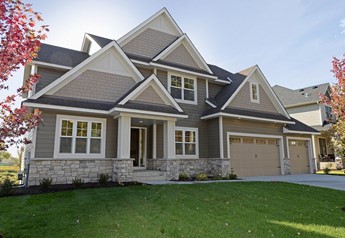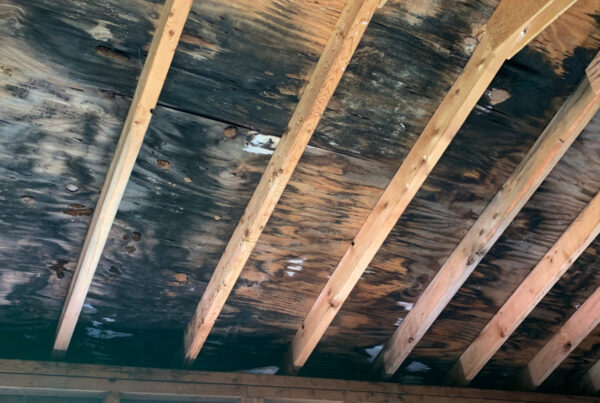How do you decide what type of siding to use on your home? Cost, aesthetics, maintenance, and durability all are items to be considered when deciding on the exterior cladding for your home. One option that has become increasingly popular is fiber cement siding. This type of cladding comes with a 30-50 year warranty; however, it also comes with a big price tag. In order to decide if this is the right product for your home, we need to explore the pros and cons associated with fiber cement siding.
Fiber cement siding is made from inert (chemically inactive) materials, typically a combination of sand, cement, and cellulose (wood) fibers. It is designed to look like wood siding but has much less required maintenance.
What are the advantages of fiber cement siding?
Low maintenance: This product typically comes with a 30-50 year manufacturer warranty. The siding can come prefinished, with a 10-15 year warranty on the finish, or be painted after installation. There is little to no maintenance required on a yearly basis.
Durable: Due to the materials used to make fiber cement, it is extremely resistant to dents and scratches. Fiber cement siding resists thermal expansion and contraction so it holds up in extremely hot or cold climates. Since one of the main components in this siding is concrete, it resists rot, mold, and mildew. There is also no risk of structural damage due to termites as the material is impervious to wood-boring insects. Fiber cement siding is resistant to deterioration from salt and ultraviolet rays. This product has been recognized by the US Green Building Council fort its durability and sustainability.
Aesthetics: The fiber cement siding can have a smooth or wood grain appearance allowing it to simulate real wood siding. The manufacturers offer a wide variety of factory applied color options or the siding can be painted after installation allowing for unlimited color choices. Unlike aluminum or vinyl siding, the color can be easily altered as needed by simply repainting.
Fire resistant: The cement properties make fiber cement siding practically fire resistant and usually allows for a Class 1A fire rating. Some insurance companies are able to provide lower home owners insurance premiums due to this classification.
What are the disadvantages of fiber cement siding?
Cost: The material cost is typically less than wood siding and more than vinyl or aluminum siding. Due to the heavy weight of fiber cement siding, additional manpower is need, which also increases the installation costs. Generally, you can expect to pay about 40% more for fiber cement siding than you would for vinyl siding.
Installation issues: This is not a typical do-it-yourself project. The manufacturers have very specific installation requirements. The warranty on the product can be voided if the installer does not follow all of these guidelines. The installation requires special tools, additional manpower, and pre-installation planning. Due to the weight of the siding, it is important that it is fastened to the structural framing members. Failure to secure the siding appropriately can cause the siding to break at the fastener locations resulting in siding boards that sag or fall off the building. The materials are brittle and may break if not handled properly. The product absolutely must be kept dry prior to installation, which complicates the pre-installation storage and handling requirements. Another important installation issue to mention is that the dust that is produced when cutting fiber cement siding contains silica, which has been known to cause lung damage. Installers need to wear masks or use dust-collecting attachments on their saws to minimize any exposure to this dust.
In order to decide if fiber cement siding is the right choice for your home, the advantages and disadvantages listed above should be weighed. For many people, the initial cost increase is offset by the low maintenance required each year.
We should note that factory defects resulted in a class action lawsuit against one of the major manufacturers of fiber cement siding. Over 103 million dollars is currently being paid out to claimants who had this defective siding installed on their homes prior to September 30, 2013. If you had siding installed prior to this date, contact our office to see if you may qualify for compensation.




